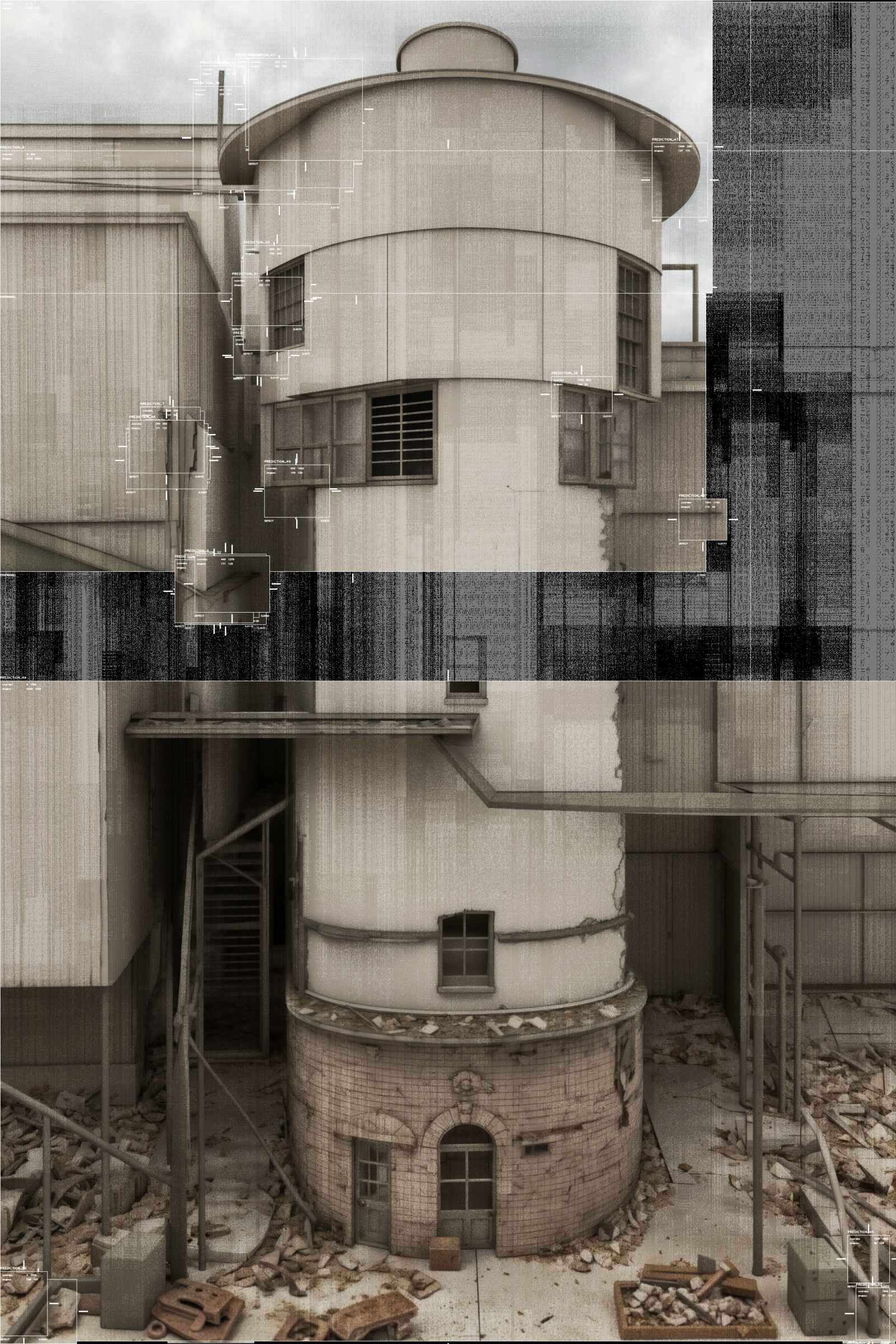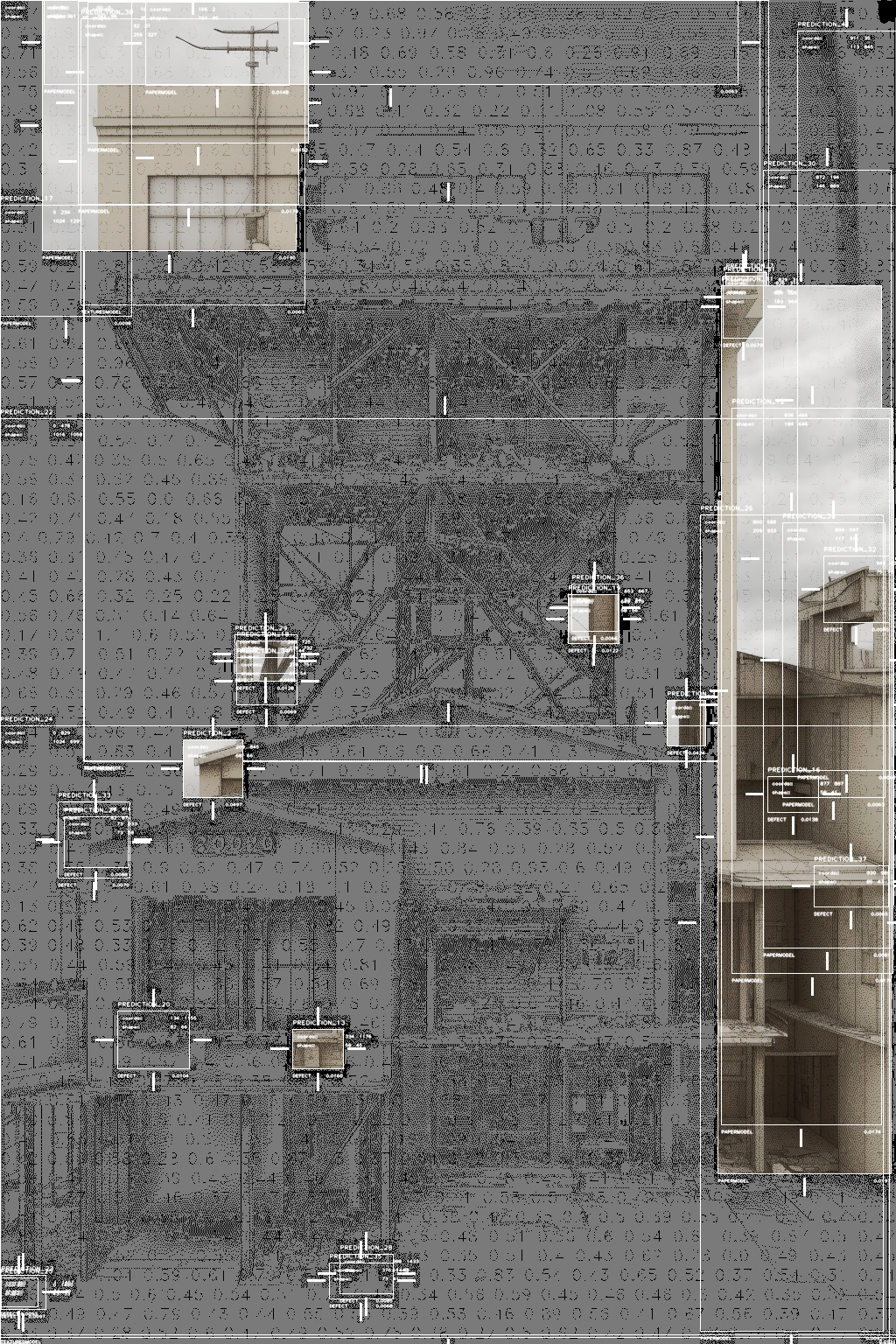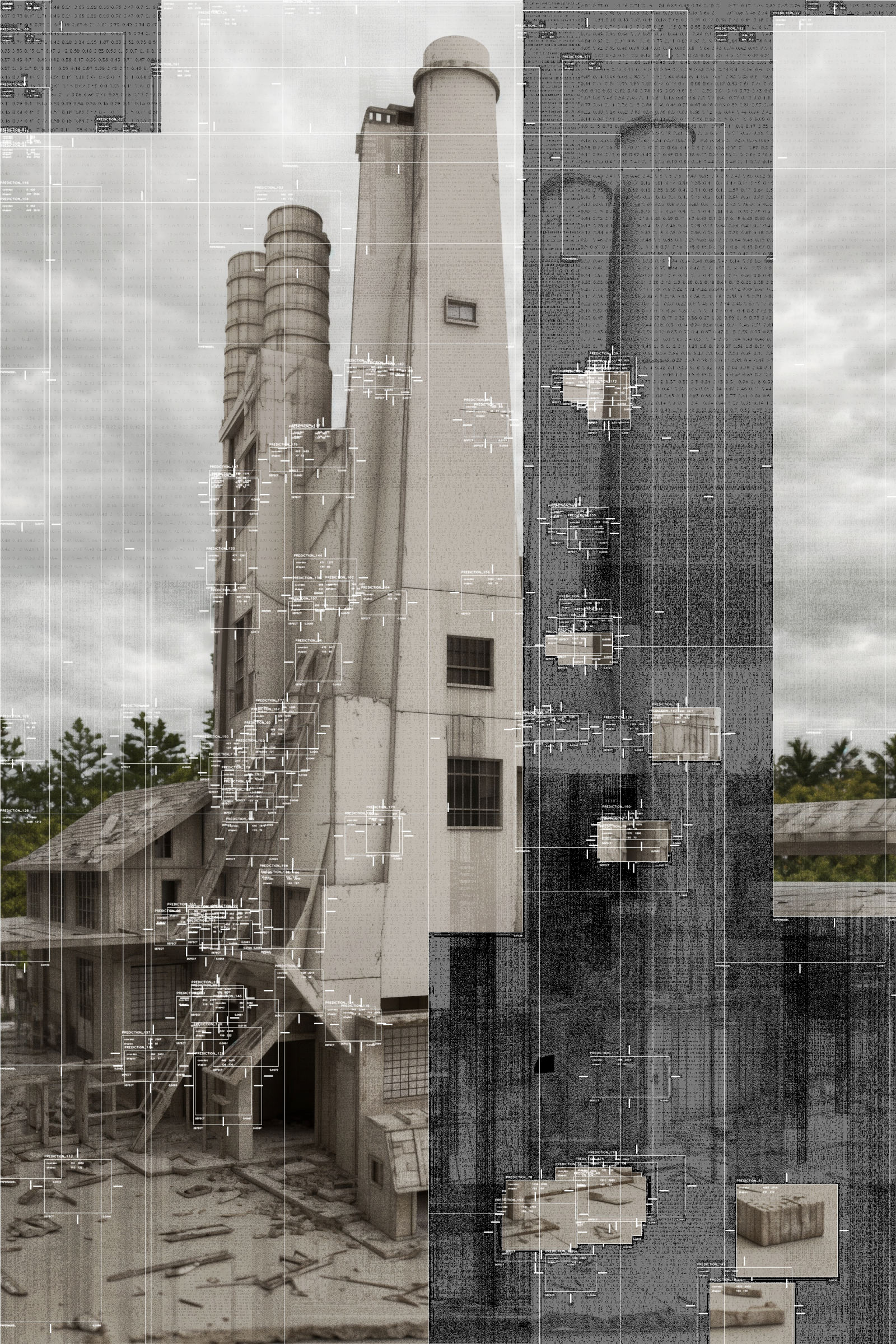Anomalies & Order: Grammars of Anonymous Architectures

Tracing the tension between irregularity and regulation, the exhibition frames anonymous architecture not as the absence of authorship but as the presence of collective, iterative, and often accidental design. Through drawings, models, digital reconstructions, and speculative interventions, the works presented investigate how these architectures encode their own grammars — syntaxes of assembly, logic of repetition, systems of deviation — and how, within these systems, anomalies become moments of expression, adaptation, or resistance.
In an era shaped by data, automation, and algorithmic planning, Anomalies & Order invites us to reconsider the aesthetics and politics of the unspectacular — to find meaning in the modular, the misaligned, and the mundane. It asks: What can we learn from architectures without architects? And what kinds of orders emerge when design is no longer authored but accumulated?
The exhibition features a range of interactive and computational media that invite viewers to engage directly with the processes of visual analysis, detection, and generative design. Two digital interfaces anchor the show’s interactive dimension. The first presents a navigable 3D t-SNE map, allowing visitors to explore a spatialized latent field of architectural images. Users can zoom, pan, and create clusters or “hotspots” of visual similarity, revealing patterns and affinities that transcend traditional typologies. This interface foregrounds perception as relational and comparative, offering a way to study anonymous architectures not by function or era, but by aesthetic behavior. The second interface engages viewers in vector arithmetic across image embeddings. Here, users can add, subtract, and multiply images — operations that generate new, curated outputs in real time. This tool rethinks the image not as a fixed object but as a composite of learned features, reframing the design process away from the semantic clarity of language toward a semantic ambiguity present in the space of image making, and algorithmic drift.
Twelve composite images demonstrate how AI-based object detection systems act as visual extraction devices, identifying and masking architectural elements to reorder the logic of the original scene. These are displayed alongside their corresponding unaltered source images, encouraging viewers to reflect on the difference between raw perception and algorithmic interpretation. A large-format self-organizing map — created using t-SNE and a variational autoencoder — further expands this inquiry by clustering hundreds of cropped fragments from anonymous buildings according to latent visual similarity. Instead of organizing by style or use, the system reveals an emergent taxonomy of material, repetition, and formal anomaly, offering a machine-generated grammar of anonymous architecture.
A separate wall presents a curated array of cropped object detections produced by a custom-trained model. These fragments, removed from their original contexts, become the basic “words” in the syntax of a non-authored architectural language. Adjacent to this are six 3D-printed models generated using multi-view diffusion techniques, which translate multiple 2D images into speculative volumetric forms. These objects materialize the latent predictions of AI, transforming neural inferences into physical structures and imagining what architecture might look like when shaped by computational intuition. Six draped sheets cycle through dynamic image sequences, ordered by scale and displayed as film-like frames, drawing unexpected relationships between each extracted element.
Completing the exhibition is a real-time object detection interface, powered by an Nvidia Jetson microcomputer, which continuously scans the gallery space and identifies forms in motion. This live system makes the mechanics of machine perception immediately visible and situates the viewer within the field of observation, transforming them from passive spectator into potential data point. Spectators are invited to pick-up the camera and interact with the space through the lens of an AI model, actively redacting what you are seeing. Collectively, these components turn the gallery into both a site of analysis and a space of speculation, where the boundaries between seeing, interpreting, and designing are dissolved. Anomalies & Order invites visitors to witness how computational systems reorder the visual world — not only cataloging the anonymous but composing new forms of architectural thought from its overlooked materials.
The exhibition situates itself within a lineage that can be traced back to Bernd and Hilla Becher’s systematic photographic surveys of industrial structures. The Bechers’ grids of water towers, cooling towers, and mineheads revealed an anonymous, typological order that elevated vernacular infrastructures into objects of aesthetic and cultural study. Anomalies & Order extends this logic into the computational age: where the Bechers used the camera to catalogue, compare, and monumentalize overlooked architectures, this exhibition uses algorithms to detect, cluster, and speculate. In both cases, what emerges is not the singularity of an author’s hand but the resonance of repetition, the logic of accumulation, and the strange beauty found in architectures that exist outside the canon of design.
Patrick Danahy is a Lecturer and the Emerging Scholar in Design at the University of Texas at Austin. He holds a Bachelor of Arts in Architecture from Clemson University, where he received the graduating Faculty award and the Peter Lee and Kenneth Russo Award for Design Excellence. He later graduated from the University of Pennsylvania with a Master of Architecture, receiving the Kanter-Tritsch Prize in Energy and Architectural Innovation, the Paul Cret T-Square Fellowship, the Van Alen Traveling Fellowship, the Dales Fellowship, the Kohn Fellowship, the Schenk-Woodman Merit Award and upon graduating was awarded the Arthur Spayd Brooke Memorial Silver Medal. In 2022, he was selected as the distinguished professor to lead an Advanced Design Studio at Texas A&M University, while serving as the Design Innovation Fellow at Ball State University. He has taught workshops on emerging media and digital technologies including at the 2022 ACADIA conference, the UCL Bartlett RC20 Skills-Share program, the University of Kentucky, and the University of Pennsylvania. He has taught in several programs including Design Studios at Texas A&M and Ball State University, Advanced Design Studios in the Landscape Architecture Program at the University of Pennsylvania, and Computation courses in the MSD – Robotics and Autonomous Systems program at the University of Pennsylvania. His teaching focuses on computation and robotics, integrating architectural reference with emerging machine-learning technologies.





